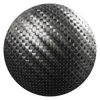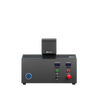Automotive The Automotive is a sector where the use of laser welding of plastic materials is widespread, both for the creation of dashboards and interiors, and for the functional internal parts of engines, power packs or hydraulics. More specifically, widespread applications are for tanks and enclosures, sensors, optical groups, dashboard components and key groups.
Medical The medical is a sector in which laser welding of plastic materials is used both for the construction of bodies and containers for medical devices, and for the consumables related to various applications. More in detail, widespread applications are for microfluidics, sterile consumables, boxes or hermetic groups of medical devices, biochips.
Electrical and Electronics Electronics is one of the fields where laser welding of plastic materials is widely used, even on a large scale. Main applications are in the electrical and consumer electronics fields: protective and hermetic boxes and assembled groups, components, sensors.
Textile Laser welding of plastic in textiles is mainly used to carry out technical fabrications such as the welding of non-woven fabric or the creation of filters and membranes.




![]()

![]()

![]()

![]()

![]()

![]()

![]()

![]()

![]()

![]()

![]()

![]()










